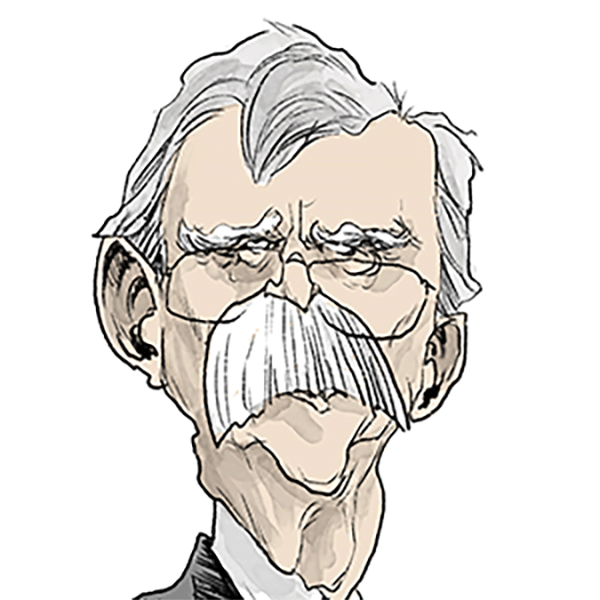Business
/ArcaMax

California-based company recalls thousands of cases of salad dressing over 'foreign objects'
A California food manufacturer is recalling thousands of cases of salad dressing distributed to major retailers over potential contamination from "foreign objects."
The company, Irvine-based Ventura Foods, recalled 3,556 cases of the dressing that could be contaminated by "black plastic planting material" in the granulated onion used, according...Read more

Musk 2018 Tesla pay plan reinstated after 7-year legal fight
Elon Musk won reinstatement of his 2018 pay package as chief executive of Tesla Inc., after the Delaware Supreme Court reversed some findings of a judge who said the billionaire improperly influenced board members who formulated the record-breaking corporate compensation package.
The high court Friday concluded the world’s richest person is ...Read more

Boeing asks FAA to waive emissions rule for 777 freighter
Boeing Co. asked the Federal Aviation Administration to temporarily exempt its 777 freighter from an international rule on greenhouse gas emissions that takes effect at the end of 2027, citing a global shortage of widebody cargo jets.
In filing with the US regulator on Friday, Boeing asked for approval to make an additional 35 of its classic ...Read more

Big retailers like Target increasingly hit by online refund fraud
Noir Luxury Refunds marketed itself as an expert in helping consumers get refunds from retailers.
But its expertise was grounded in fraud, federal prosecutors say, and a Minnesota man is expected to be the 10th person to enter a guilty plea for the Noir racket.
Noir’s operatives spanned the country, though the fraud ring was allegedly run ...Read more

Casey Williams: Three fantasy rides with whiffs of nostalgia for celebration, travel and sleighing
We’ve worried enough this year, so let’s pretend money is no concern and fantasize about buying whatever we want … automotively speaking.
Whether you covet elegance, comfort for traveling, or sport for sleighing, one of these fantasies — with whiffs of nostalgia — should brighten your carpark this season.
For celebration: 2025 Rolls...Read more

Would-be Florida homebuyers getting cold feet? Many more are walking away from purchases
More homebuyers have been backing out of home-purchase agreements in many parts of Florida and across the U.S., a new analysis shows.
Florida and Texas are seeing more newly built homes “than anywhere else in the country,” leading some buyers to back out of deals because they feel they might find a better option, according to Redfin, a real...Read more

Why is Trump's media company getting involved with nuclear power?
President Trump's media company is merging with a nuclear fusion energy firm in a $6 billion deal aimed at generating more power amid growing demand from power-hungry artificial intelligence data centers.
The merger between Trump Media & Technology and TAE Technologies could lead to one of the world's first publicly traded fusion energy ...Read more

Opposition grows against Norfolk Southern merger with two unions taking a stand
A growing mix of rail customers, lawmakers and even a competitor have been publicly speaking out against the proposed Norfolk Southern-Union Pacific merger in the months since it was announced.
On Wednesday, two of the companies’ largest unions, the Brotherhood of Locomotive Engineers and Trainmen and the Brotherhood of Maintenance of Way ...Read more

Ford's move to affordable trucks won't include Ranger PHEV, Super Duty
Ford Motor Co. is bringing more affordable trucks to the United States, but there are no plans to bring the plug-in hybrid and Super Duty variants of its midsize Ranger that it's betting on to expand market leadership in Europe, Australia and southeast Asia.
The Dearborn automaker this year introduced the models as it seeks to expand its share ...Read more

Honda Accord updated for a dying sedan market
For 2026, the Ohio-made Honda Accord gets mid-cycle updates after its 11th generation introduction in 2023. Those updates are minor compared to previous generations because the Accord — the second best-selling non-pickup truck in America just 11 years ago — has seen sales plummet by nearly 60% in a dying mid-size sedan market.
Accord is a ...Read more

Auto review: On the town in the sci-fi, low-mi Hyundai Ioniq 9 EV
DETROIT — The striking, three-row Hyundai Ioniq 9 is an avatar for the electric niche.
I flogged the Ioniq 9 all over Metro Detroit — the 300-mile, natural radius of an EV — as I helped chaperone a racquets tournament and performed daily chores. From its sci-fi, "Blade Runner" exterior to its posh white interior, the Ioniq is dressed to, ...Read more

Auto review: 2025 Toyota Sequoia 1794 Hybrid moves everything with style
In today’s consumer market, buyers want appeal and comfort — it’s that easy. Car buyers look past their needs and focus on their wants. Well, in Grasso’s Garage this week, an $80K base price seven-passenger people mover, ready for the long haul but certainly in style, is just the ticket.
Our 2025 Toyota Sequoia 1794 Hybrid tester got a ...Read more

Auto review: 2026 Infiniti QX80 Autograph is a last taste of luxury before things get worse
The 2026 Infiniti QX80 Autograph is not a car. It’s actually large enough to be a new U.S. Territory.
Infiniti, Nissan’s attempt to be Lexus, which is Toyota’s attempt to be Mercedes-Benz, which is Germany’s attempt to prove they won the peace, has taken its biggest, boldest SUV and stapled the word Autograph on it. Which is fitting, ...Read more

Rivian to help train next generation of engineers with Georgia universities
Electric vehicle startup Rivian announced Thursday five education partnerships and sponsorships across Georgia — all focused on technical training and emerging technologies.
The California-based company, which plans to build a $5 billion Georgia factory and has its East Coast headquarters in Atlanta, committed at least $330,000 to the ...Read more

Americans facing a tough job market in 2025 won't get a break next year
This year was a difficult one for Americans looking for work. Forecasters don’t see much improvement in their prospects coming in 2026.
The unemployment rate is set to remain elevated through almost all of next year despite solid economic growth, according to economists surveyed by Bloomberg. That unusual combination owes to the growing role ...Read more

UAW shakes up top staff after text messages reveal retaliation scheme
United Auto Workers President Shawn Fain's chief of staff has resigned following evidence that he colluded with the union's compliance director to falsify allegations against Secretary-Treasurer Margaret Mock, whose departmental assignments will be restored, according to a report filed Thursday by the union's court-appointed monitor.
The UAW ...Read more

Disney+ to be part of a streaming bundle in Middle East
Walt Disney Co. is expanding its presence in the Middle East, inking a deal with Saudi media conglomerate MBC Group and UAE firm Anghami to form a streaming bundle.
The bundle will allow customers in Bahrain, Kuwait, Oman, Qatar, Saudi Arabia and the UAE to access a trio of streaming services — Disney+; MBC Group's Shahid, which carries ...Read more

Colorado rocket maker considering Front Range for 1,850 jobs
The Colorado Economic Development Commission on Thursday approved its largest single incentive awards ever, extending $35.2 million in state tax credits to a rapidly growing developer and producer of solid rocket motors and hypersonic propulsion systems, matching the description of a company called Ursa Major.
In line with the practice of ...Read more

IRS confirms $2K slot jackpot threshold begins in '26
A long-awaited update to slot jackpot tax reporting included in the One Big Beautiful Bill Act will take effect in 2026, the Internal Revenue Service confirmed this week.
The updated minimum threshold of $2,000 for slot jackpots will begin Jan. 1, according to the federal agency.
The confirmation follows Monday’s posting of a draft IRS Form ...Read more
Real estate Q&A: How can we get neighbor to deal with constantly barking dog
Q: Ever since our new neighbor moved in six months ago, they have constantly left their dog out, and it never stops barking. We try to be patient, but it’s getting intolerable. What can we do? — Katya
A: Dealing with inconsiderate neighbors can be frustrating and stressful. For some people, it might be a barking dog; for others, it could be...Read more
Popular Stories
- No degree, no job? Tighter labor market leaves many with fewer options
- Big retailers like Target increasingly hit by online refund fraud
- Honda Accord updated for a dying sedan market
- Would-be Florida homebuyers getting cold feet? Many more are walking away from purchases
- Opposition grows against Norfolk Southern merger with two unions taking a stand









